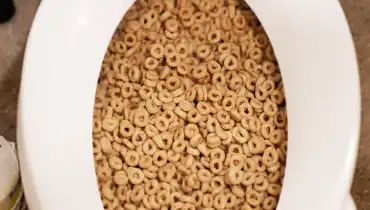Are You Permitted to Dispose of Food Waste in the Toilet?
Are You Permitted to Dispose of Food Waste in the Toilet?
Blog Article
They are making a number of great annotation on the subject of Is it safe to flush food (especially rice) down the toilet? overall in this post beneath.

Intro
Many people are commonly confronted with the dilemma of what to do with food waste, especially when it concerns leftovers or scraps. One typical concern that develops is whether it's alright to flush food down the commode. In this article, we'll explore the reasons individuals may take into consideration purging food, the repercussions of doing so, and alternative methods for correct disposal.
Reasons that individuals could take into consideration purging food
Absence of understanding
Some people might not recognize the potential damage caused by flushing food down the bathroom. They may incorrectly believe that it's a harmless practice.
Comfort
Purging food down the bathroom may feel like a fast and simple option to taking care of undesirable scraps, specifically when there's no close-by trash can available.
Idleness
In many cases, people might simply pick to flush food out of sheer idleness, without thinking about the consequences of their activities.
Effects of flushing food down the bathroom
Ecological impact
Food waste that ends up in waterways can add to contamination and damage marine ecological communities. Additionally, the water made use of to flush food can stress water resources.
Plumbing concerns
Flushing food can cause clogged pipes and drains, triggering expensive plumbing repair services and aggravations.
Types of food that should not be purged
Fibrous foods
Foods with fibrous textures such as celery or corn husks can obtain tangled in pipelines and trigger clogs.
Starchy foods
Starchy foods like pasta and rice can absorb water and swell, leading to obstructions in pipes.
Oils and fats
Greasy foods like bacon or cooking oils need to never ever be flushed down the bathroom as they can strengthen and create blockages.
Appropriate disposal methods for food waste
Using a garbage disposal
For homes geared up with waste disposal unit, food scraps can be ground up and flushed with the plumbing system. Nevertheless, not all foods are suitable for disposal in this way.
Recycling
Specific food packaging products can be recycled, lowering waste and lessening environmental effect.
Composting
Composting is an environmentally friendly method to dispose of food waste. Organic materials can be composted and made use of to improve soil for horticulture.
The importance of appropriate waste administration
Minimizing environmental harm
Proper waste administration techniques, such as composting and recycling, aid lessen contamination and protect natural resources for future generations.
Protecting pipes systems
By preventing the practice of flushing food down the bathroom, homeowners can prevent pricey pipes repair work and maintain the stability of their plumbing systems.
Final thought
In conclusion, while it may be tempting to flush food down the commode for benefit, it is necessary to understand the prospective repercussions of this action. By adopting appropriate waste administration methods and disposing of food waste responsibly, individuals can contribute to healthier plumbing systems and a cleaner atmosphere for all.
THINK TWICE BEFORE FLUSHING FOOD DOWN YOUR TOILET IN FALLBROOK CA
Let’s be honest, we’re really supposed to be tossing rotten or leftover food in the compost bin or trash can. But many people like to place scraps of food down the drain of, say, their kitchen sink. That’s why the garbage disposal was invented: so we can continue to place certain foods down the drain without clogging our drain in the process. Smart.
But not all of us have the luxury of having a garbage disposal installed. So, you might continue to shove food down your sink drain anyway – or worse: you might flush them down your toilet! If you’re guilty of doing the latter, you’re going to want to stop, and here’s why:
Toilet Drains Aren’t Designed to Handle Food!
There’s your answer: food just doesn’t belong in your toilet. It may seem like your toilet drain is wider than the drains of your sinks, but truth be told, that isn’t actually the case. The narrower pipes of your toilet leave your plumbing at risk for clogging if you do happen to flush your food. In addition, food doesn’t break down as quickly that toilet paper and human waste do. In turn, this leaves your toilet at risk for a nasty clog.
Although a flush of a tiny pinch of food every now and then isn’t going to completely damage your toilet, there are certain foods that should absolutely not be flushed in your toilet at all. These include starchy foods like mashed potatoes, grains, hard pieces of food that are slow to break down, and fats and oils.
The latter categories of food are particularly problematic as they may harden, expand as they absorb water, break down slowly in your system, or generally create the perfect obstruction with their gelatinous composition. These are all things you don’t want in your plumbing system!
Experiencing a Toilet Clog?
Nobody’s perfect, and we all make mistakes. Sometimes one of the mistakes people make is flushing food down their toilet and later realizing that it wasn’t the best thing to do once they see that their toilet is now clogged. Uh-oh!

Do you really like reading up on What Can Happen If You Flush Food Down the Toilet?? Make feedback further down. We'd be delighted to listen to your views about this page. We are looking forward that you come back again soon. Enjoyed reading our piece? Please quickly share it. Help other people check it out. Thank you for your time. Come back soon.
Schedule Service Report this page